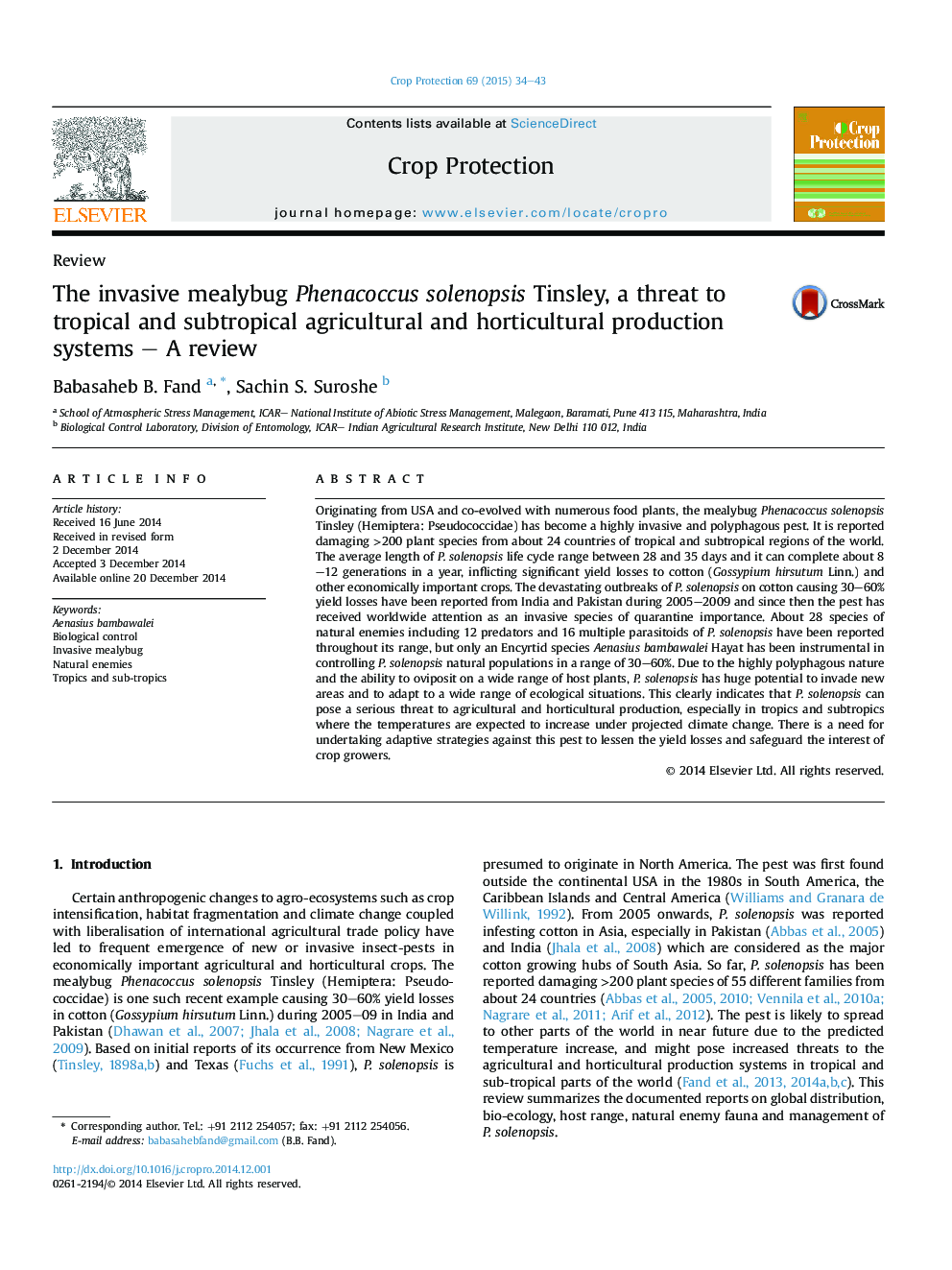| Article ID | Journal | Published Year | Pages | File Type |
|---|---|---|---|---|
| 4505845 | Crop Protection | 2015 | 10 Pages |
•The need to formulate adaptive strategies for Phenacoccus solenopsis is highlighted.•The bio-ecology, host range and natural enemy complex of P. solenopsis are reviewed.•The impact of climate change on future invasiveness of P. solenopsis is discussed.•Future strategies and policy interventions for P. solenopsis management are suggested.
Originating from USA and co-evolved with numerous food plants, the mealybug Phenacoccus solenopsis Tinsley (Hemiptera: Pseudococcidae) has become a highly invasive and polyphagous pest. It is reported damaging >200 plant species from about 24 countries of tropical and subtropical regions of the world. The average length of P. solenopsis life cycle range between 28 and 35 days and it can complete about 8–12 generations in a year, inflicting significant yield losses to cotton (Gossypium hirsutum Linn.) and other economically important crops. The devastating outbreaks of P. solenopsis on cotton causing 30–60% yield losses have been reported from India and Pakistan during 2005–2009 and since then the pest has received worldwide attention as an invasive species of quarantine importance. About 28 species of natural enemies including 12 predators and 16 multiple parasitoids of P. solenopsis have been reported throughout its range, but only an Encyrtid species Aenasius bambawalei Hayat has been instrumental in controlling P. solenopsis natural populations in a range of 30–60%. Due to the highly polyphagous nature and the ability to oviposit on a wide range of host plants, P. solenopsis has huge potential to invade new areas and to adapt to a wide range of ecological situations. This clearly indicates that P. solenopsis can pose a serious threat to agricultural and horticultural production, especially in tropics and subtropics where the temperatures are expected to increase under projected climate change. There is a need for undertaking adaptive strategies against this pest to lessen the yield losses and safeguard the interest of crop growers.
